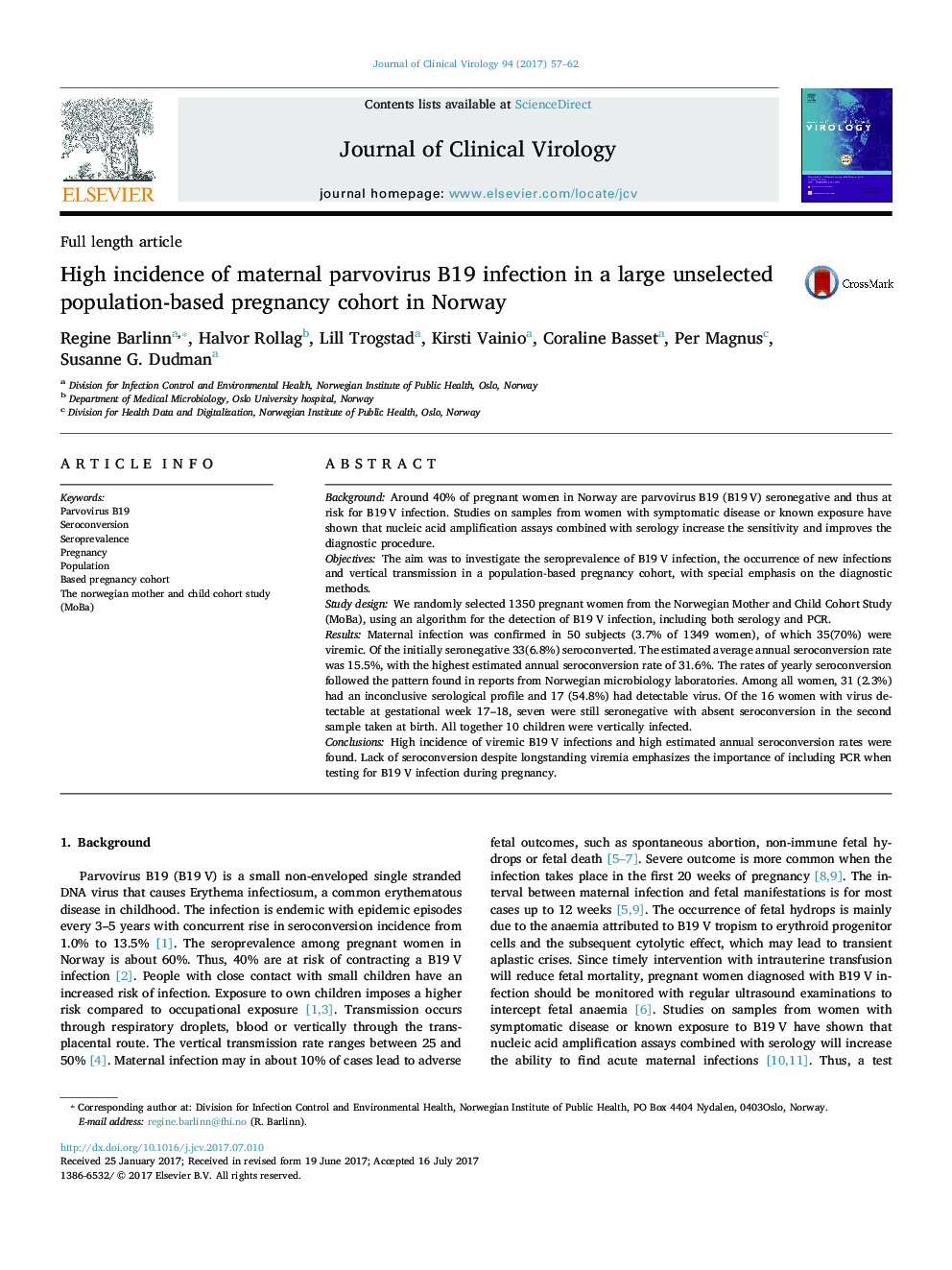| کد مقاله | کد نشریه | سال انتشار | مقاله انگلیسی | نسخه تمام متن |
|---|---|---|---|---|
| 5668043 | 1592332 | 2017 | 6 صفحه PDF | دانلود رایگان |

- High incidence of viremic B19Â V infections and seroconversion rates were recorded in this cohort of randomly selected pregnant women.
- A combination of serology and PCR is essential for diagnosing parvovirus B19 infection in pregnant women.
- Lack of seroconversion despite longstanding viremia emphasizes the importance of including PCR when testing for infection during pregnancy.
- Vertical transmission of B19Â V was seen in 20% of mothers with confirmed infection and in 28% of B19Â V viremic mothers.
BackgroundAround 40% of pregnant women in Norway are parvovirus B19 (B19Â V) seronegative and thus at risk for B19âV infection. Studies on samples from women with symptomatic disease or known exposure have shown that nucleic acid amplification assays combined with serology increase the sensitivity and improves the diagnostic procedure.ObjectivesThe aim was to investigate the seroprevalence of B19Â V infection, the occurrence of new infections and vertical transmission in a population-based pregnancy cohort, with special emphasis on the diagnostic methods.Study designWe randomly selected 1350 pregnant women from the Norwegian Mother and Child Cohort Study (MoBa), using an algorithm for the detection of B19Â V infection, including both serology and PCR.ResultsMaternal infection was confirmed in 50 subjects (3.7% of 1349 women), of which 35(70%) were viremic. Of the initially seronegative 33(6.8%) seroconverted. The estimated average annual seroconversion rate was 15.5%, with the highest estimated annual seroconversion rate of 31.6%. The rates of yearly seroconversion followed the pattern found in reports from Norwegian microbiology laboratories. Among all women, 31 (2.3%) had an inconclusive serological profile and 17 (54.8%) had detectable virus. Of the 16 women with virus detectable at gestational week 17-18, seven were still seronegative with absent seroconversion in the second sample taken at birth. All together 10 children were vertically infected.ConclusionsHigh incidence of viremic B19Â V infections and high estimated annual seroconversion rates were found. Lack of seroconversion despite longstanding viremia emphasizes the importance of including PCR when testing for B19Â V infection during pregnancy.
Journal: Journal of Clinical Virology - Volume 94, September 2017, Pages 57-62